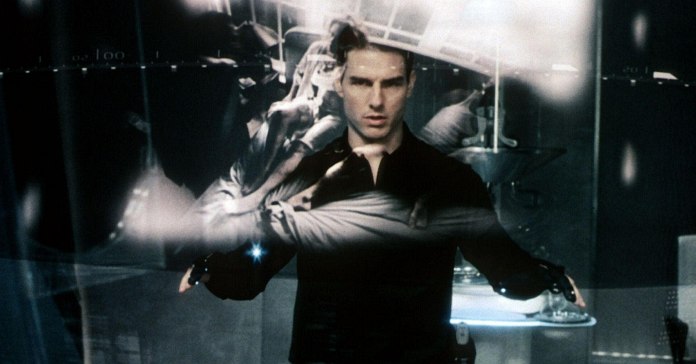
Since the birth of cinema, science fiction movies have astoundingly predicted future technologies and scientific breakthroughs. Take, for example, the remarkable film A Trip to the Moon from 1902, which remarkably foresaw the moon landing a staggering 67 years in advance! And who could ever forget the captivating worlds of Star Wars and Star Trek, showcasing mind-boggling innovations like holograms, 3D printing, and tablets?
While these technological marvels may initially seem harmless, sci-fi films often take a more thought-provoking approach by warning us about inventions that could bring disastrous consequences. It’s truly spine-chilling when real-life scientists ignore these cautionary signs and proceed to bring these inventions into existence.
Science fiction serves as a canvas for painting dystopian landscapes, providing glimpses into the potential horrors that await us in the future. These imaginative tales imagine worlds where mind-reading technology is used to control citizens, streets are patrolled by menacing killer robots, and neural implants have explosive consequences. They also present near-future scenarios where climate change pushes scientists to take extreme and deadly measures, or where artificial intelligence becomes more trusted than human connections.
Some of these inventions are so unsettling that they feel straight out of an apocalyptic nightmare. However, the unsettling truth is that many of them already exist in some shape or form. Films like RoboCop and Snowpiercer served as cautionary guides, warning us about advancements that have sadly become a reality.
So, let’s embark on an exciting adventure to explore these real-world advancements that movies have proven to be ill-advised. It’s time to delve deeper into these captivating tales from the silver screen and learn from the mistakes they have so brilliantly foreseen.
1. Dystopian ‘Social Credit’ Systems Predicted In ‘Demolition Man’ And ‘Black Mirror: Nosedive’ Have More Or Less Become A Reality In China

Government surveillance and control have long been popular themes in science fiction, and one particularly invasive concept is the social credit system. In the movie “Demolition Man,” Sylvester Stallone’s character wakes up after being frozen for years to discover a drastically transformed Los Angeles. The city is virtually crime-free, people communicate with computers, and Taco Bell is considered a culinary delicacy. However, there is also a strict moral code that prohibits swearing, meat consumption, contact sports, non-educational toys, and spicy food. Violating these rules results in fines and deductions from one’s social credit score.
A more chilling and realistic portrayal of a social credit system can be seen in the “Nosedive” episode of the TV series “Black Mirror.” In this episode, a person’s social standing and economic status are determined by a rating system. Every interaction, from buying coffee to chatting with acquaintances, is given a rating ranging from zero to five stars. Those with high cumulative scores enjoy perks such as discounts on mortgages and exclusive event invitations, while those with low scores become social outcasts. Although this is a dystopian scenario, it is not entirely far-fetched, as a similar system already exists in one part of the world.
Since 2014, the Chinese government has been gradually implementing a “social credit system” that assigns ratings to individuals, companies, and government entities. In 2022, a draft law was introduced to make the system mandatory, with penalties for those whose ratings fall below a certain threshold. The Chinese government claims that the purpose of this system is to foster trust within society. People and companies are assessed based on their perceived level of “trustworthiness” in various aspects of life, including business transactions and family relationships. Actions that can improve one’s score include acts of heroism, having good financial credit, taking care of elderly relatives, and expressing support for the government online. On the other hand, actions such as making insincere apologies, cheating in online games, neglecting to visit family members, criticizing the government, and committing traffic violations can lower one’s score.
The consequences of low social credit scores in China can be significant. Those with high scores are rewarded with benefits such as free gym memberships and expedited access to healthcare, while those with low scores may face bans from air travel, loss of public services, and public shaming. Public shaming could involve displaying the faces and identification numbers of low-ranking individuals on public screens. While this system has sparked criticism from foreign governments, it is worth noting that many people already rely on ratings to make decisions about movies, restaurants, and even professional services like hiring an accountant. This has led some to question the hypocrisy of condemning the Chinese system while embracing similar rating systems in other aspects of life.
2. Amazon Patented A Wristband That Can Track Employees’ Every Move And Provide ‘Haptic Feedback’ To Correct Their Behavior

Filmmakers have long been fascinated with the idea of technology and the workforce merging, depicting nightmarish scenarios where machines exploit, control, and discard human workers. In the classic film Metropolis from 1927, factory workers are literally devoured by the monstrous machines they operate. Sleep Dealer, released in 2008, portrays South American immigrants who are kept on the Mexican side of the border and linked to a cybernetic network that forces them to control robots in the US. This technology not only exploits their labor but also prevents them from crossing into the country. Another series called Severance showcases employees whose brains are surgically split into separate consciousnesses – one for work and one for home. These workers are coerced, abused, and imprisoned by the company, extracting every ounce of productivity from them without any chance for protest.
While the real-world labor force has always evolved alongside technological advancements, the idea of robots replacing workers on assembly lines is not as unsettling as the technologies portrayed in science fiction that manipulate human bodies and minds. However, it was only a matter of time before a company decided to test these dystopian concepts in reality. In 2018, Amazon obtained two patents for wristbands that would monitor its workers’ movements and correct them with a warning vibration. This came after employees had already accused the company of subjecting them to inhumane working conditions, claiming they were pushed to exhaustion by unattainable goals. One employee shared with the New York Times that they were treated like machines, saying, “The robotic technology isn’t up to scratch yet, so until it is, they will use human robots.”
Due to Amazon’s implementation of workplace surveillance, a movement among its warehouse workers to unionize gained momentum. In response, the company reportedly planned to launch an internal chat app that would ban words such as “slave labor,” “union,” “pay raise,” and “plantation.” While these inventions may not be literally consuming employees like the machines in Metropolis, they certainly rival any dystopian workplace depicted on the silver screen.
3. You Die In The Matrix, You Die For Real’ Was Apparently An Invitation For The Oculus Rift Creator, Who Created A VR Headset That Can (Theoretically) Kill You If You Die In VR

Tech bros aren’t exactly the most adored members of society, but the creator of Oculus Rift faced an intense backlash for his outrageous proposal for the future of virtual reality headsets. Remember that iconic scene in The Matrix where Morpheus tells Neo that dying in the Matrix means dying in real life? It’s a pivotal moment that sets the rules of the movie’s world and raises the stakes for the characters. It’s an intense moment in a thrilling sci-fi flick, but it’s definitely not something most people aspire to experience in real life. However, Oculus founder Palmer Luckey seemed to have a different idea. In 2022, he announced his creation of a VR headset that would actually kill people in the real world if they died in a video game.
Inspired by a fictional headset in the anime series Sword Art Online, Luckey’s NerveGear headset includes an explosive device that would instantly end the user’s life when they die in a video game. Luckey explained that he has always been fascinated by connecting a person’s real life with their in-game character, as it “elevates the stakes to the maximum level and forces people to completely reconsider how they interact with the virtual world and its players.” He cheerfully mentioned that he was halfway there in making the NerveGear a reality, but unfortunately, the only part he had figured out was the lethal explosive device. To make matters worse, the headset had an “anti-tampering mechanism” that prevented users from removing it if they had second thoughts about, you know, getting their head blown up. Luckey proudly declared that this was the first VR device in real life that could actually kill users, and ominously hinted that it wouldn’t be the last.
Despite Luckey’s fervor for his invention, it seems he hasn’t quite inspired other entrepreneurs to follow suit.
4. Solar Engineering Is Being Developed To Spray Aerosol Injections Into The Atmosphere To Block Sunlight And Slow Climate Change, Which Is Exactly How ‘Snowpiercer’ Starts
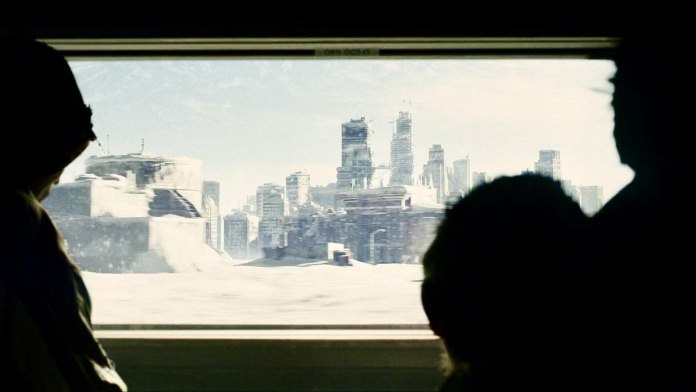
Snowpiercer presents a chilling scenario where scientists’ efforts to cool the sun and combat climate change inadvertently trigger another ice age. The movie takes place on a train traversing through a frozen wasteland, following the few individuals who managed to escape the icy planet and now journey around the world. However, the train has regressed into a medieval-like society, with the lower classes enduring abject poverty while the upper classes revel in luxury. The film depicts the enslavement of children, the periodic culling of the poorest passengers, and the absence of any solution for leaving the train and starting anew. It is a harrowing portrayal of a well-meaning scientific “solution” gone awry. Surprisingly, scientists are currently rushing to replicate the very experiment that nearly led to extinction in the movie, believing it may be the only viable approach to tackling the climate crisis.
Confronted with the imminent and severe consequences of rapidly rising global temperatures, scientists are exploring the possibility of using airborne chemicals like sulfur, aluminum, and diamond dust to block the sun and restore manageable temperatures. This technique, known as stratospheric aerosol injection, or “solar geoengineering” and “solar-radiation management”, is being seriously investigated by multiple organizations. Scientists assert that its implementation is only a matter of time. While creating another ice age is not the primary concern raised by critics, they do caution against other potential repercussions. Dimming the sun could impede plant growth and lead to even colder temperatures in already frigid regions. Some areas may experience increased flooding, while others could face exacerbated droughts. In fact, scientists warn that if one country decides to launch a solar geoengineering program and another country suffers the consequences, it could escalate to the point of nuclear annihilation. These real-life considerations are more intricate than the world-ending ice age depicted in Snowpiercer, but they are no less urgent.
5. Law Enforcement Can Use Advanced Algorithms To Ramp Up ‘Predictive Policing’ Similar To ‘Pre-Crime’ From ‘Minority Report’ (Without The Psychics)
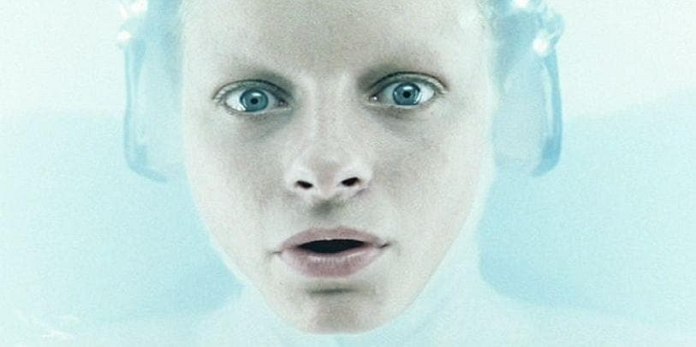
Steven Spielberg’s 2002 sci-fi thriller Minority Report delves into the world of Pre-Crime, a futuristic law enforcement division where “precogs” use their psychic abilities to predict and prevent future crimes. The film follows John Anderton, played by Tom Cruise, who heads the program but starts questioning its accuracy when he is accused of a murder yet to happen. While the city boasts a crime-free environment thanks to the precogs’ visions, the movie not only raises concerns about free will but also sheds light on the questionable actions of those in control of the technology.
In the Minority Report universe, the leaders of Pre-Crime conceal discrepancies called minority reports in the precogs’ predictions. Additionally, they engage in covering up their own murderous acts and framing their adversaries. This plotline prompts reflection on the individuals responsible for utilizing this advanced system. Although in our real world criminals are presumed innocent until proven guilty, the concept of predicting crime is not restricted to dystopian fiction but rather exists and is gaining popularity among authorities.
In 2022, researchers from the University of Chicago made headlines by claiming that they had developed an algorithm with a 90 percent accuracy rate in predicting crimes. However, their model focuses on forecasting areas where crimes might take place rather than identifying the potential perpetrators. Nonetheless, some researchers raise concerns about the use of predictive policing algorithms. These algorithms are built upon police data, which is influenced by the activities of law enforcement. Unfortunately, police activity tends to disproportionately target and impact minority and low-income communities. This bias led to the abandonment of a pre-crime program in Los Angeles in 2019. On the other hand, Florida continues to embrace pre-crime programs, with law enforcement maintaining lists of individuals deemed likely to commit crimes. These predictions are often based on previous arrests, but can also rely on factors such as children’s academic performance, history of abuse, and school attendance records.
A reporter humorously remarked on Twitter, “Someone should tell the Tampa police that Minority Report was a *dystopian* society, not a blueprint for fighting crime.” This comment highlights the discrepancy between the fictional world and the idea of implementing a similar system in reality.
6. The Genetic Engineering Prophesied In ‘Gattaca’ Has Become A Practical Reality
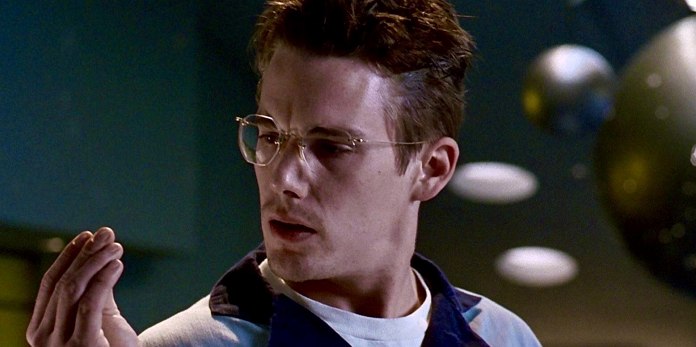
Some science fiction movies gain recognition over time. When Gattaca was released in 1997, it didn’t do well at the box office, only making $12 million, despite receiving positive reviews. However, as the years passed, its reputation grew, and it is now considered a classic in the genre. One of the main reasons for this is its ability to predict the implications of genetic engineering. The movie portrays a society divided into “valids” and “invalids” based on their genes. Valids, who have been genetically selected, hold all the power and privileges, while invalids, born naturally, face discrimination and limited opportunities. Ethan Hawke’s character, an invalid, challenges this system, highlighting the dangers of genetic engineering on social mobility and free will.
The idea of manipulating human DNA raises countless existential and practical questions. Scientists, however, have a tendency to push the boundaries in their fields, and genetic engineering is no exception. The concept of “designer babies” has been a possibility since the discovery of the double helix in the 1950s. By the 1980s, the revolutionary gene-editing tool called CRISPR was invented, and in 2017, it was used to remove disease-causing genes from embryos. While IVF clinics have allowed parents to select embryos for years, CRISPR takes it a step further by allowing the addition of desired genes. Although most scientists are cautious about these possibilities and many countries have laws against it, there are some researchers willing to take risks.
In 2018, a scientist in China was sentenced to three years in prison for genetically editing embryos that resulted in three genetically engineered children. Despite the fact that scientists argue the technology isn’t advanced enough to create designer babies at the moment and point to examples like Ethan Hawke’s character in Gattaca, who defies his genetic destiny, this case in China shows that some researchers are willing to push boundaries despite the risks. It raises concerns that the future may resemble the world depicted in Gattaca more than we anticipate.
7. Decades After ‘RoboCop,’ Real Cities Decided To Arm Robot Cops With Lethal Weapons
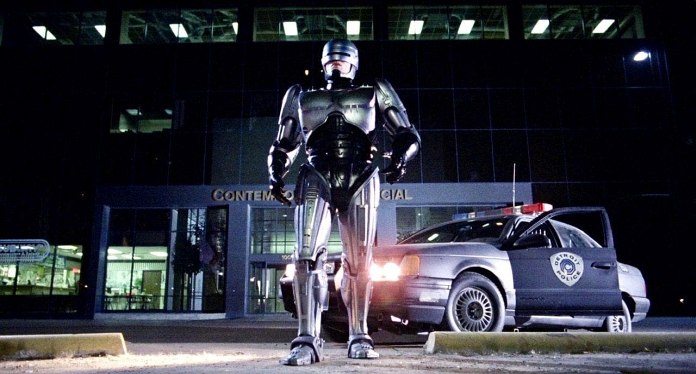
Paul Verhoeven’s 1987 sci-fi classic RoboCop takes us into a not-so-distant future where a private corporation called Omni Consumer Products seizes control of the police force in Detroit and introduces cyborg officers. The initial version of their robots ends up killing a company employee, but the second version proves to be more successful. Enter RoboCop, constructed from the remains of Alex Murphy, a murdered cop. He becomes a lethal and loyal crime-fighting machine, faithfully following orders from his superiors. However, everything changes when he discovers his past as a human cop and begins questioning his existence. His investigation leads him to uncover the truth: Omni is responsible for Murphy’s death. The problem arises when RoboCop tries to apprehend the guilty executive but finds that his programming prevents him from arresting a member of the corporation, even if they’re a criminal.
It doesn’t take a dystopian movie to make one realize that having cyborg cops with the ability to use deadly force is a terrible idea. Yet, the city of Dallas didn’t seem to think so. In 2016, they sent a robot to neutralize a sniper who had killed several police officers. While law enforcement has been employing robots for tasks like saving people from fires and dismantling bombs for years, this was the first time a robot was specifically configured to use deadly force. San Francisco was also considering implementing its own fleet of lethal cyborgs in 2022, but due to public outrage, they ultimately abandoned the plan. Protesters held signs with messages like “We all saw that movie… No Killer Robots.” The backlash wasn’t solely about the potential malfunctioning of robots or the lack of humanity in artificial intelligence. Instead, it focused on the fallibility of the individuals who create and deploy such technology, particularly the police’s troubling history of disproportionately killing Black and Hispanic individuals. RoboCop serves as a cautionary tale, highlighting the risks associated with the corporation behind the cyborg rather than the cyborg itself. Even though San Francisco’s initiative failed, military forces worldwide are rapidly advancing the development of killer robot technology.
8. Researchers Have Discovered How To Micro-Target Specific Memories And Erase Them So That You Can (Potentially) ‘Eternal Sunshine’ Yourself

Eternal Sunshine of the Spotless Mind presents a rather pessimistic perspective on memory-erasing technology. The film centers around Joel and Clementine, portrayed by Jim Carrey and Kate Winslet, a couple whose tumultuous relationship leads them to undergo procedures to erase their memories of each other. However, Joel regrets his decision midway and attempts to safeguard his memories through his subconscious mind. Meanwhile, Clementine falls prey to a technician from Lacuna Inc., the company responsible for her memory erasure, who manipulates her by exploiting his familiarity with her memories. Despite having their conscious memories erased, the couple still experiences fleeting emotional recollections. Beyond the ethical concerns it raises, the movie explores the notion of selective memory erasure and questions whether individuals truly desire to forget intensely painful experiences. It serves as a subtle examination of how memory shapes one’s identity and autonomy, offering a cautionary message about the technology it portrays. Strikingly, a similar procedure now exists in reality and is promoted as a groundbreaking therapy by some medical professionals.
In experiments involving mice, scientists successfully identified the specific brain cells responsible for storing traumatic memories (in this instance, memories of electric shocks rather than breakups) and targeted them to reduce activity in that area of the brain, effectively ‘turning off’ the memory. These findings were hailed as having significant implications for the treatment of post-traumatic stress disorder (PTSD). However, even if the technology proves precise, the ethical and existential consequences could be substantial. Dr. Crystal L’Hôte, an associate professor of philosophy at Saint Michael’s College, argues that while medications are already used to diminish negative emotions associated with certain memories, completely erasing memories poses a perilous path. Such a practice would not only raise fundamental questions about truth and identity but also hinder personal growth and learning from mistakes. As Joel and Clementine’s story in the movie suggests, they would likely be destined for a similar fate if they were to reunite, but a glimmer of hope remains due to the remnants of their shared past, potentially allowing them to avoid repeating previous pitfalls.
9. Brain/Neural Implants In Movies Are Always Used To Track, Control, Or Kill The User – And Now They’re Real

Brain implants in movies often depict disastrous outcomes. Whether it’s the consciousness-splicing implants in Severance or the chips in Johnny Mnemonic that turn humans into data couriers, these devices are typically used by powerful entities to exploit and dehumanize individuals. The Belko Experiment and Possessor take this concept to extreme levels, showcasing neural implants that are used to kill their hosts. In Belko, explosive implants are used by a company to exterminate its employees, while in Possessor, an assassin uses implants to manipulate victims into committing murder before taking their own lives. Even in movies where implants are portrayed as medical advancements, there is always a catch. In Upgrade, for instance, an implant granting superhuman abilities to a paralyzed protagonist turns out to be a corrupted technology with its own agenda.
Despite the cautionary tales depicted in science fiction, researchers have already begun implanting these devices into people’s brains, claiming they represent medical breakthroughs. As of mid-2022, 34 individuals have received neural implants to address blindness, deafness, and cognitive or physical impairments. This technology translates neural signals into movement, showcasing remarkable possibilities. For instance, one company aims to develop implants that directly transmit information to a person’s visual cortex, eliminating the need for functioning eyes. However, ethical concerns arise alongside these advancements. Elon Musk’s Neuralink, for example, is working on an implant that could potentially grant humans “digital superintelligence.” While Musk acknowledges the risks of merging the human brain with AI, he aims to create a neural device that coexists peacefully with the brain’s existing functions.
Given the cautionary nature of sci-fi movies, both the general public and scientists are wary of these developments. In 2019, researchers from Imperial College London predicted that by 2040, neural implants will be a commonplace treatment for paralysis, Alzheimer’s disease, and depression. However, they also expressed concerns about potential consequences, such as governments and companies gaining access to people’s thoughts and emotions. The ethical implications of neural implants must be carefully considered as this technology continues to advance.
10. The CIA And The Tech Industry Are Working To Resurrect Extinct Species Using Advanced Genetic Sequencing, Decades After ‘Jurassic Park’

Jurassic Park taught us one thing: dinosaurs are absolutely terrifying. While the idea of a park filled with these ancient creatures might seem exciting, once the security system fails, your chances of survival drop to zero. The 2015 reboot of the series, Jurassic World, faced a tough challenge in justifying its existence. Surely, the new owners of Isla Nublar would have learned from their predecessors’ mistakes and avoided cloning dinosaurs. But no, the greed of these fictional theme park owners knows no bounds. They are destined to repeat the catastrophic errors of the past. As Omar Sy’s character mutters, “These people never learn.”
Interestingly, it seems real-life scientists are no different. In 2020, researchers made an astonishing discovery: cells and nuclei of dinosaurs in prehistoric fossils, and possibly even traces of DNA. This revelation opens the door to the possibility of de-extincting these species. Although it may sound like a stretch, there is already a tech startup committed to bringing back woolly mammoths and Tasmanian tigers through genetic engineering. Surprisingly enough, it has received financial support from the likes of billionaire Peter Thiel, self-help guru Tony Robbins, the CIA, and even Paris Hilton, the it-girl of the 2000s. While some scientists criticize the de-extinction project for diverting funding away from currently endangered animals, it continues to move forward. And who knows, dinosaur cloning may not be too far off. DNA expert Hendrik Poinar, whose father partly inspired Jurassic Park, admits, “I never used to think it would be possible to get genomes. But we now get genomes. I never thought we could actually reconstruct parts of those genomes, but we’ve done that, too. Will we ever find a dinosaur with viable DNA? I’ve learned to never say never.”
Poinar is straightforward in expressing his views on the matter. He highlights that modern science has no understanding of how ancient species function. With nearly 99 percent of species having gone extinct, he firmly states, “We should leave them in the past.”